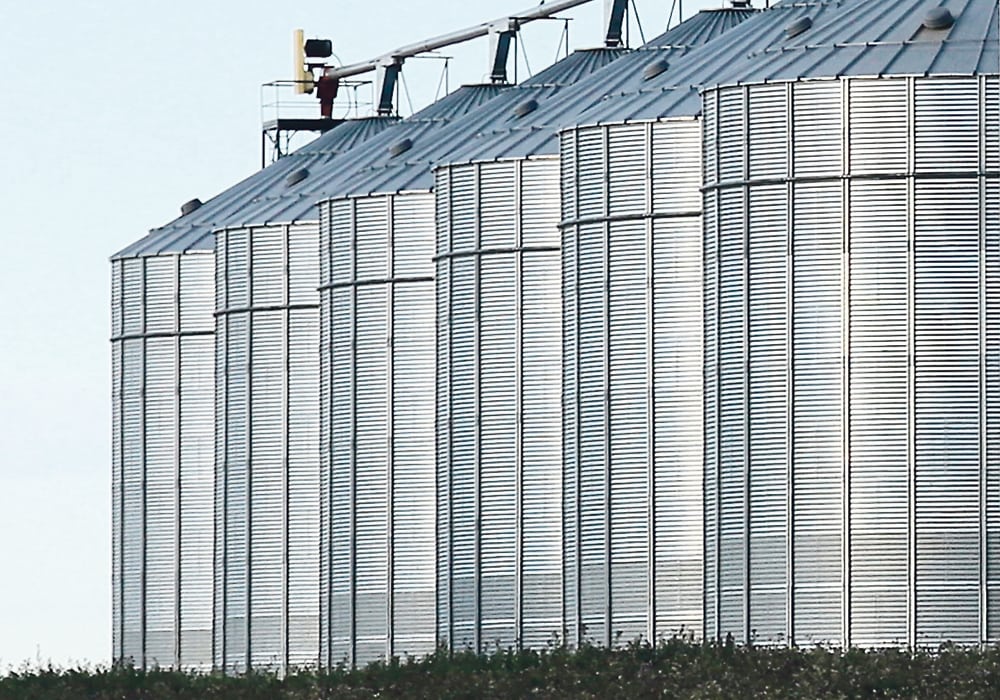Carryout from the 2017-18 crop is going to be way bigger than usual, according to Canada’s grain monitor.
Quorum Corp. is forecasting 12.6 million tonnes of ending stocks for western Canadian grains, well above the previous five-year average of 8.3 million tonnes.
That means there will be an extra 4.3 million tonnes sitting in grain bins with what Agriculture Canada expects to be another big crop on the way.
One million tonnes of the excess will be pulses with the rest being a mix of canola and cereals.
Read Also

Farming Smarter receives financial boost from Alberta government for potato research
Farming Smarter near Lethbridge got a boost to its research equipment, thanks to the Alberta government’s increase in funding for research associations.
Quorum president Mark Hemmes said poor railway service between October and April is to blame for the bloated carryout, and there is no way to catch up before the end of the crop year.
“There’s a finite capacity for the railways to pick it up,” he said.
“It’s not like they’re going to get back the 30 weeks of slow movement that we saw.”
Exports have also been disrupted by government policy, such as India’s pulse import duties and Italy’s country-of-origin-labelling on pasta.
The good news is that farmer deliveries into the grain handling system are up the past few weeks.
Growers have been trucking about one million tonnes per week to their local elevators. The average is usually 800,000 to 900,000 tonnes and in June and July it is typically far less than that.
“What that says is grain companies are buying grain and they wouldn’t be buying it unless they have a sale for it,” said Hemmes.
If the pace of deliveries stays elevated for the remaining weeks of the 2017-18 crop year, it could knock carryout below 12 million tonnes.
Wade Sobkowich, executive director of the Western Grain Elevator Association, said carryout is typically about 10 percent of total crop size.
Last year, Western Canadian farmers harvested a 72 million tonne crop, so the industry was anticipating 7.2 million tonnes of endings stocks.
The picture gets a little worse using his numbers. It means there will be 5.4 million tonnes, or 75 percent more grain, in the system than was expected earlier in the year.
Sobkowich had a different view about farmer deliveries than Hemmes.
“We’re outside the peak price period, so it’s more difficult to offer attractive prices to farmers and so the grain isn’t moving into the system,” he said.
Adding 12.6 million tonnes of last year’s crop to this year’s harvest could be a burdensome load, depending on how the railways respond.
“If the railways provide enough capacity, the rest of the supply chain has the capacity to move it through,” said Sobkowich.
He said demand is not an issue. If the railway capacity is there the grain companies will be able to move the product to markets around the world.
Sobkowich said the railways have been made aware that there will be a lot more carryout than normal this year.
Hemmes has no idea if the railways will improve their service in 2018-19, but they are definitely putting in the effort.
Canadian National Railway, which experienced a myriad of problems in the fall and winter, is buying locomotives and training crews.
“We were in their training centre back in the fall and it was a madhouse, like they had hundreds of people in their training centre,” he said.
Canadian Pacific Railway, which had problems later in the shipping season, has also “upped their game,” said Hemmes.
He believes the railways are motivated after being on a “months-long apology tour.”
“You’ve got to think anybody in a corporation absolutely deplores having to do that, so they’ll probably do whatever they can so they don’t get caught in that mess again,” said Hemmes.


















